The harvest of regular potatoes—as if there is such a thing as a “regular potato”—was largely unsuccessful this year. We don’t know why 2022’s harvest was so bad. (We have some guesses). But, on this sunny November second, we were counting on the sweet potato harvest to make up for the failure of the other tubers.
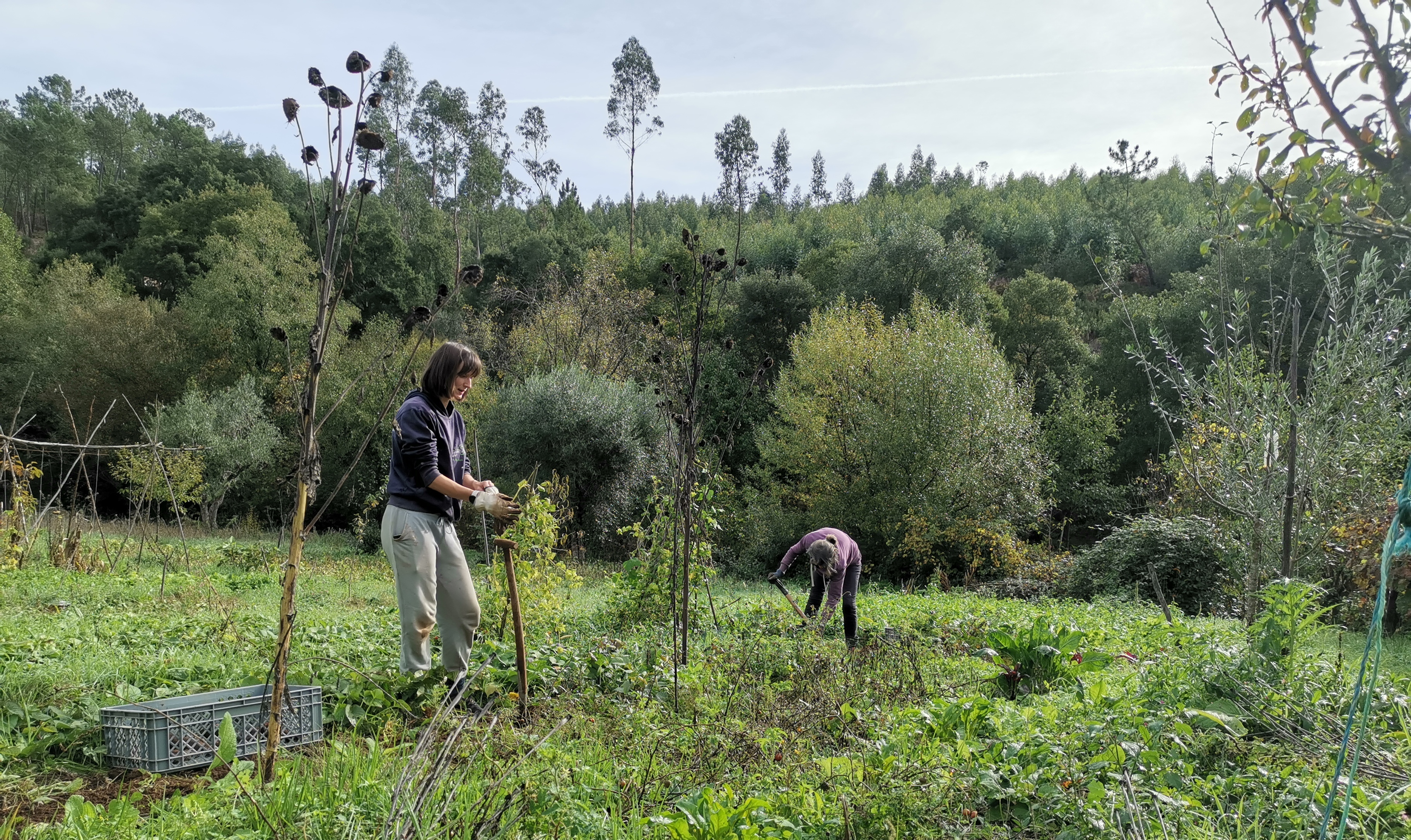
Indeed the sweet potatoes were in much better shape than the regular potatoes that were dug up mid-August. This is a trend here in the Ponte de Pedra valley. Until I moved to rural Portugal, sweet potatoes were a hipster luxury. In the Netherlands, regular potatoes are abundantly grown. So, for me, it was a pleasant surprise to learn that sweet potatoes are very affordable on the local market in Cernache do Bonjardim, because everybody grows them. Well “everybody” above 50 with a vegetable garden, which is pretty much everybody who lives outside of the town centers (bar a few foreigners such as ourselves), since most youngsters have fled the poverty of the countryside for the lure of a big-screen TV in a tiny, overpriced apartment in Lisbon or Porto. (Actually, a lot of Portuguese spend part of their working life in other, better-paying EU countries.)
The sweet potatoes in our own veggie beds were plentiful, though not as plentiful as they were last year. That year—2021—I wasn’t involved in the planting and the harvesting, but I saw the amazing amount of sweet potato tubers that were dug up by my mother, sister and brother. Yet, in my eyes, as a hipsters who used to pay top euro for the “exotic” sweet potato in Dutch supermarkets, on his first sweet potato harvest, the yield was phenomonal.
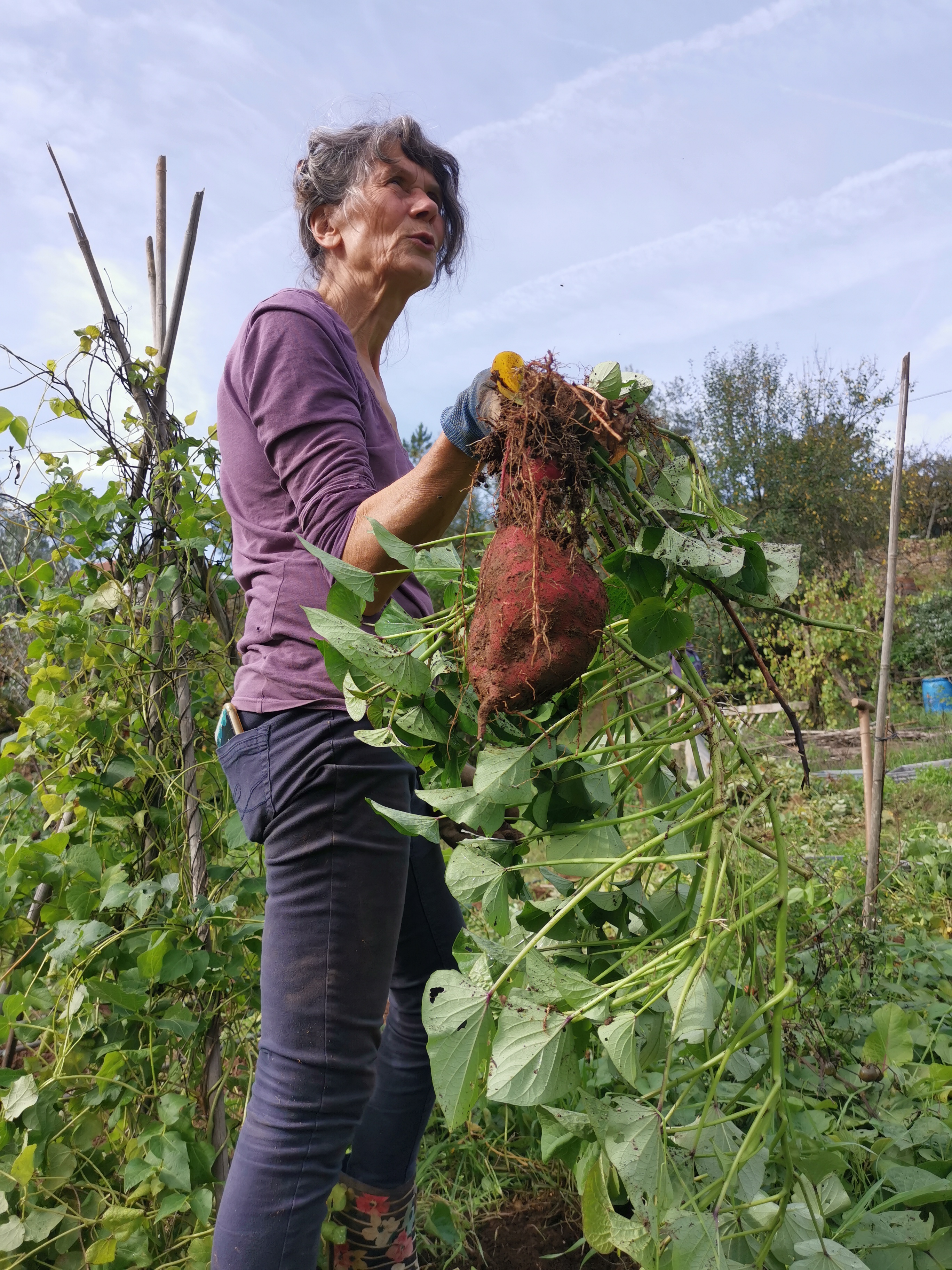
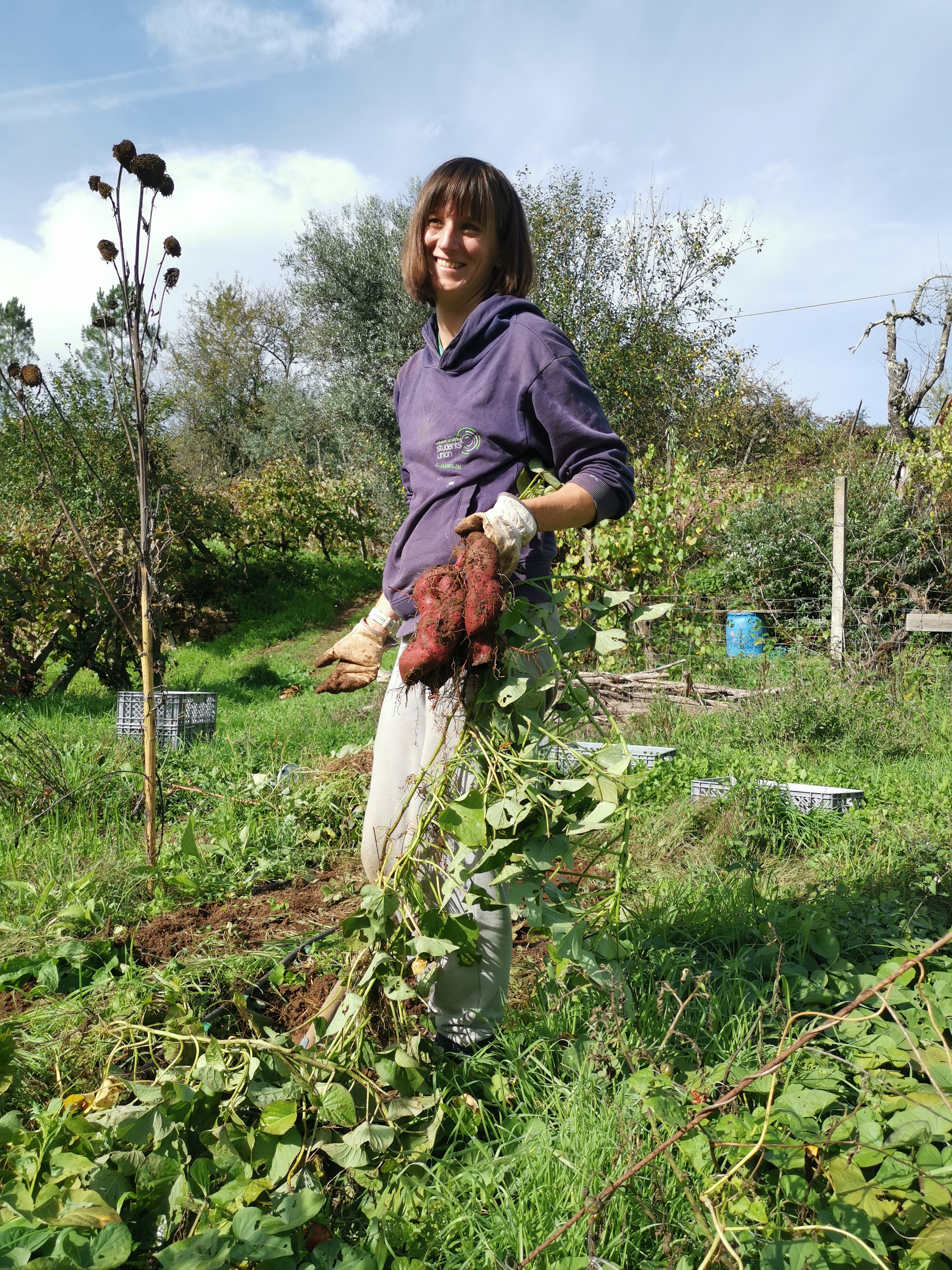
3 different varieties of the sweet potato had been planted:
- The sweet potato plants yielding the most abundant tubers (in both size and number) were of the variety with a Bordeaux red skin and whitish flesh.
- A small amount of an orangy-red variety were planted. They produced some decently-size tubers, but not very many—not even enough to draw conclusions about their suitability for this particular soil and microclimate.
- Another variety, with a very brown/grey skin and very purple flesh, was also not very abundant. Of the 3 varieties, these remained the smallest; I don’t know whether this is intrinsic to the variety or whether the variety is fuzzier about soil quality.
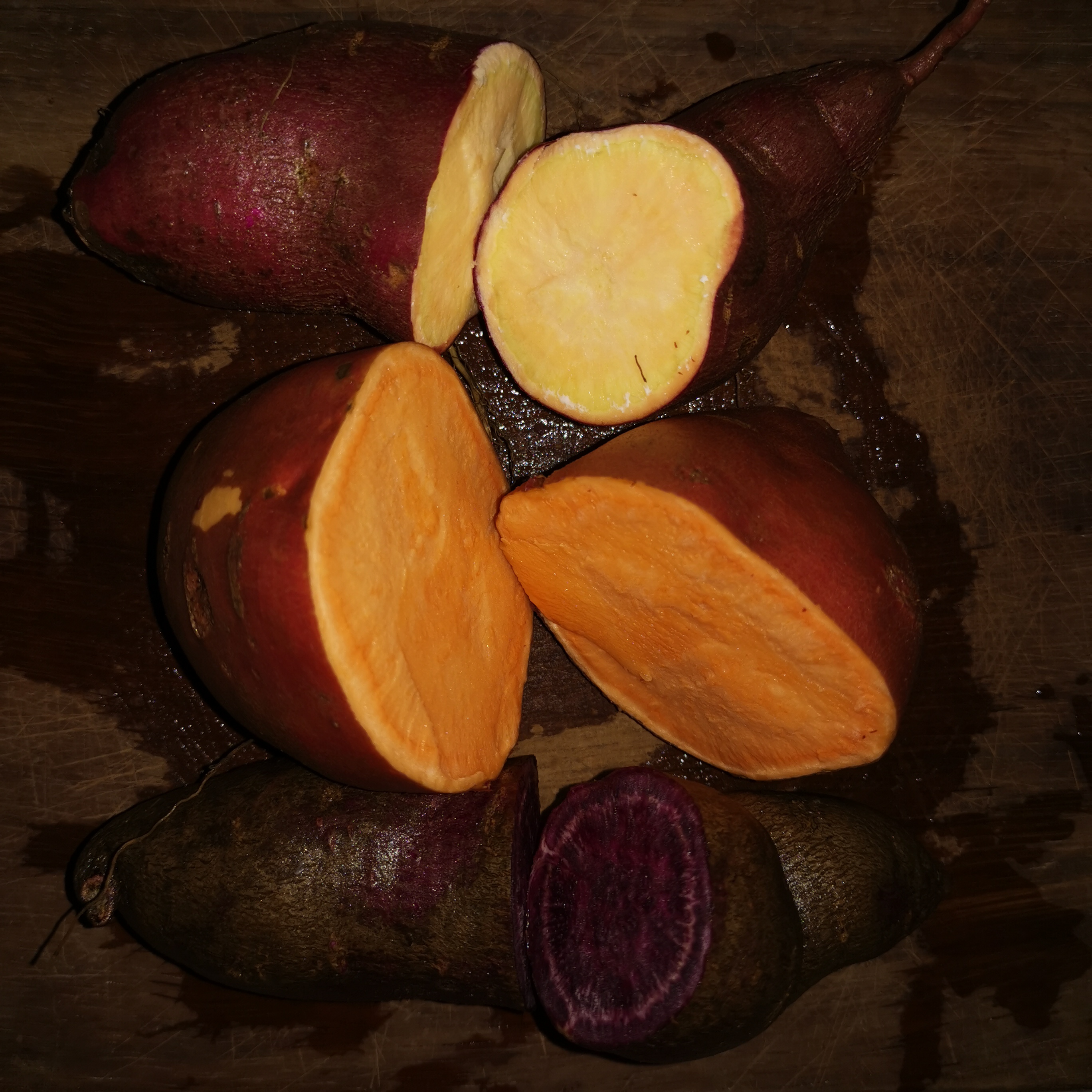
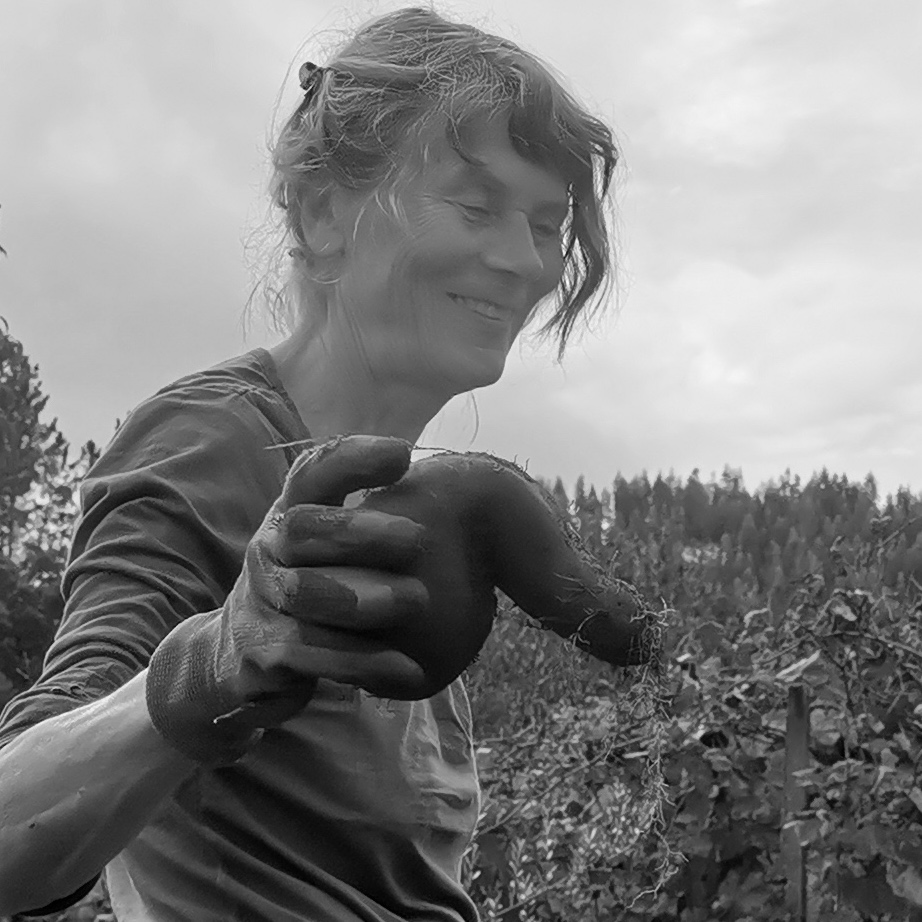
In terms of yield, there was a lot of variation between the individual sweet potato plants of each of the 3 varieties. This was most evident for the Bordeaux-red variety to which most of the plants belonged. Some specimens’ tubers were hardly tubers at all; instead of glorious, bumpy, bulbous things, such plants only had some elongated bulges. Others had, in addition, one or two big bulbs. A rare few had a whole bunch of big bulbs. And most had a bunch of mixed-size bulbs.
In previous years, Annemarie—the mom—had experimented with putting some plant parts back into the ground for the subsequent year’s planting. The plants rotted away during the winter due the daily morning frost. (Remember that frost that wasn’t supposed to happen in this valley?) My own ruin to be, a bit further down the stream valley, is potentially less affected by wintery weather. So, me and my mom took the dogs for a walk and I planted a whole bunch of left over plant material in the delicious rich soil on one of the abandoned terraces. (That soil is so deliciously dark thanks to decades of neglect during which deciduous trees have been left to grow freely.)
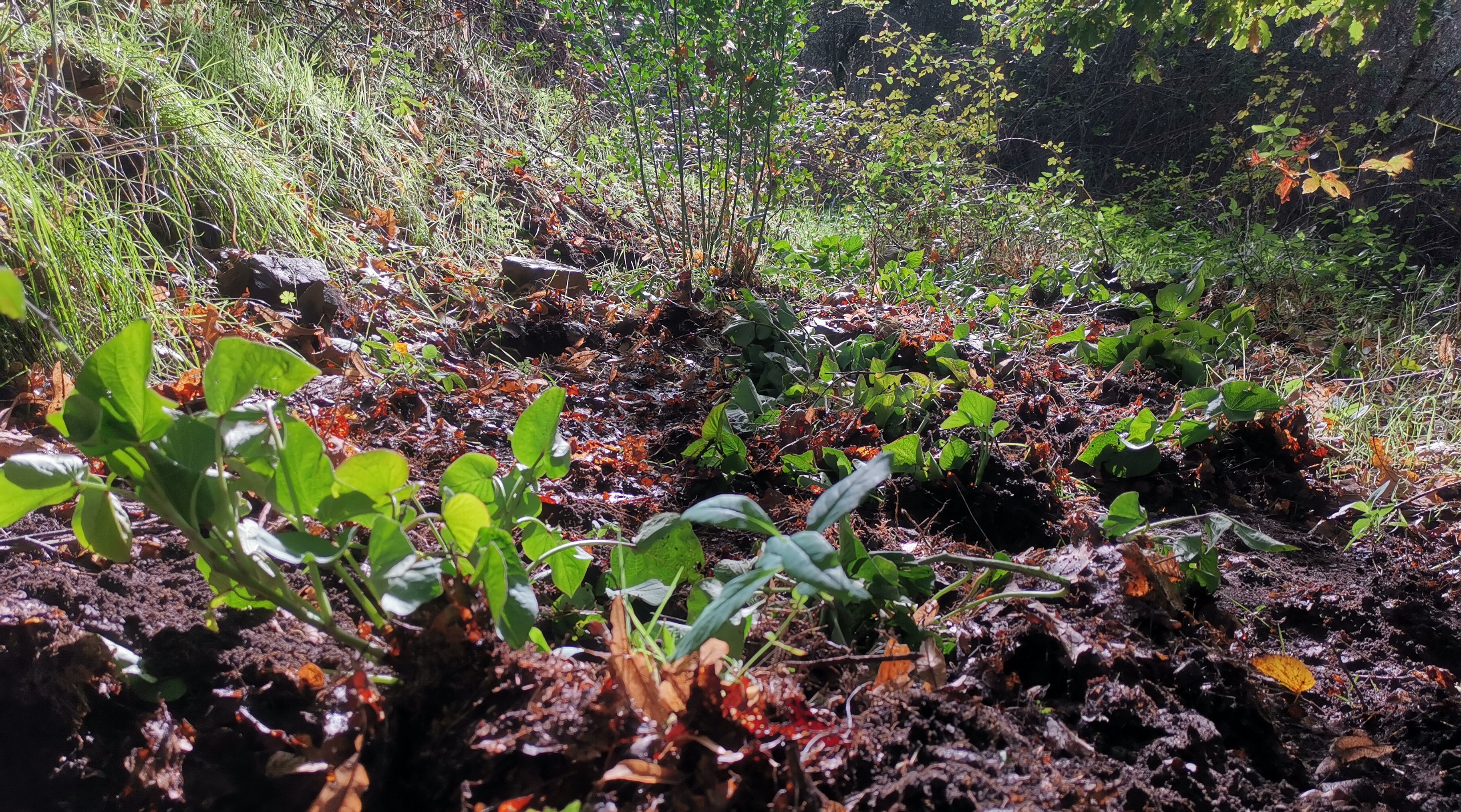
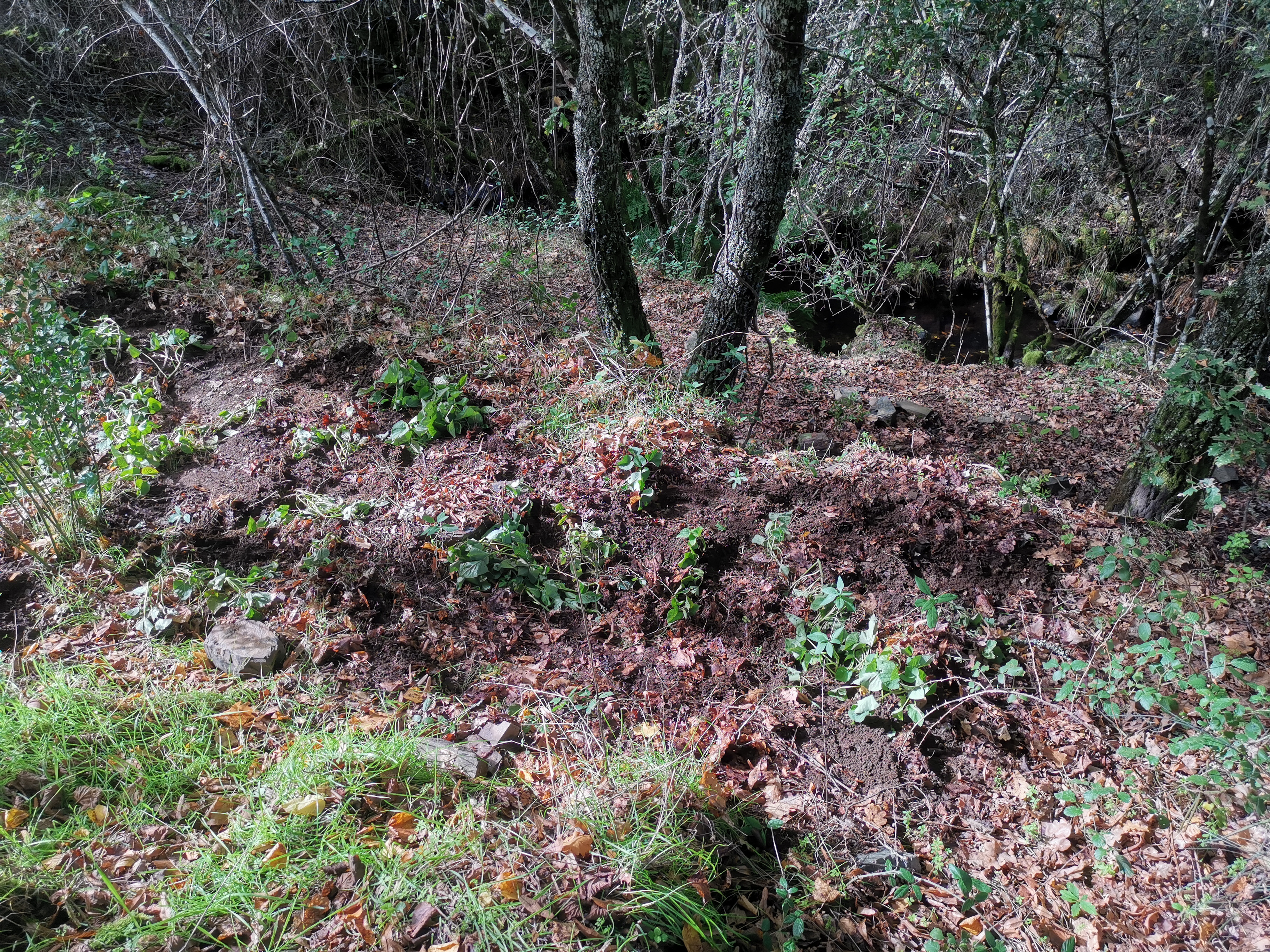
A lot of the sweet potato offshoots were still connected to small bulbs (too small to be worthwhile for the harvest. So, if the frost is not too crazy near my ruin, and if the javalis are not too greedy, we may start next year’s sweet potato planting from our own stock. Fingers crossed. The experimentation never ends, in the permaculture philosophy (and in ecology in general (and in playing and learning in even more general)).
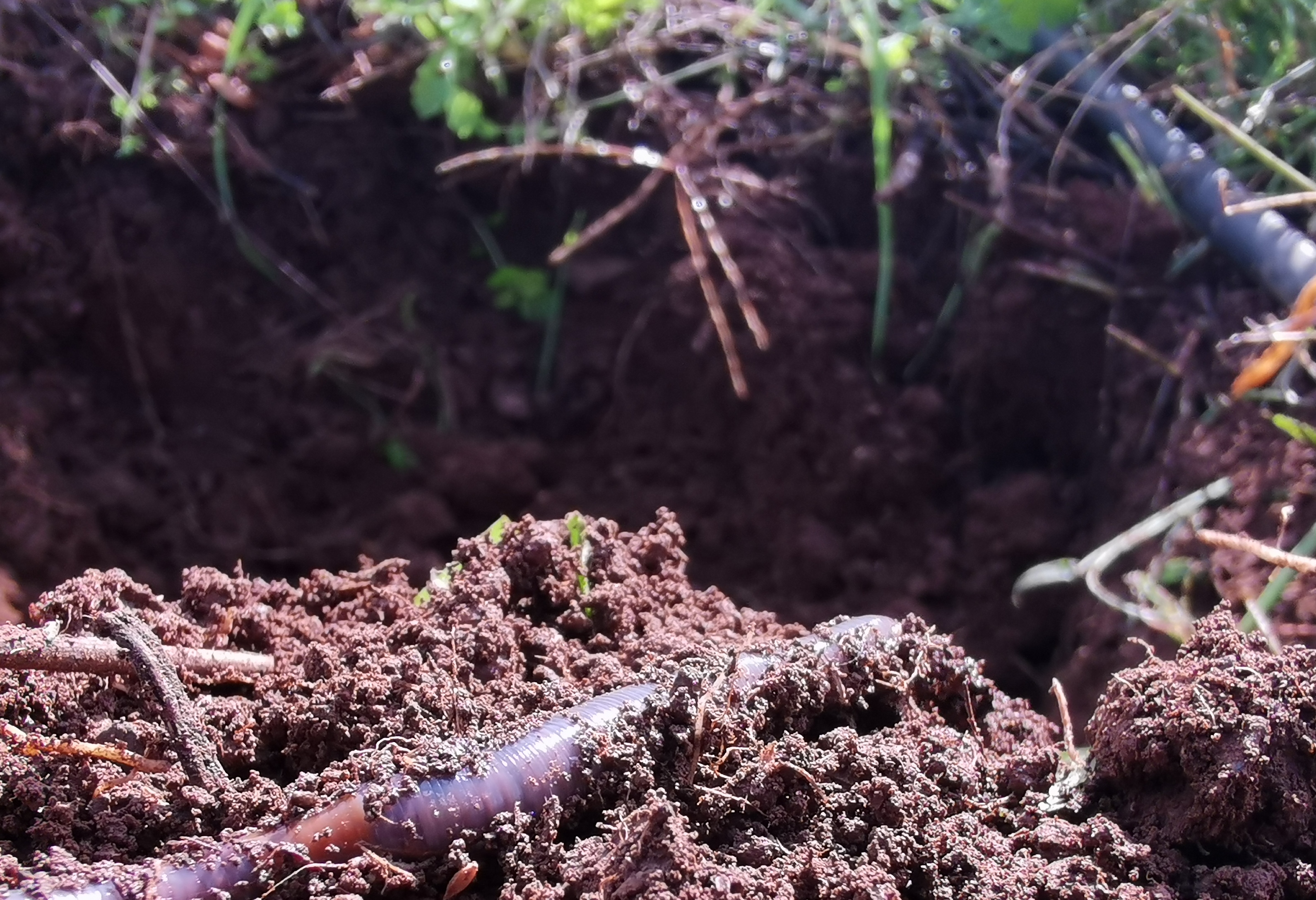
On the subject of soil fertility: Laurelin—the sister—noticed that the soil that we were harvesting the sweet potatoes from has also gotten better since the previous harvest: there were more earthworms. The added compost and the mulching with weeds are starting to compound, although it will, without major biomass influx, take years for that soil to turn to the quality of that neglected terrace soil about which I hope to write more in the future. Meanwhile, next year, with our loving tending to the soil, the sweet potatoes are expected to provide a bountiful harvest again. The type of loving care that goes into preparing their new beds is a story for later (though the tending—an ongoing process—has already started).
